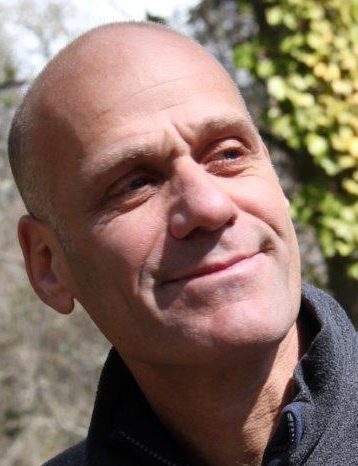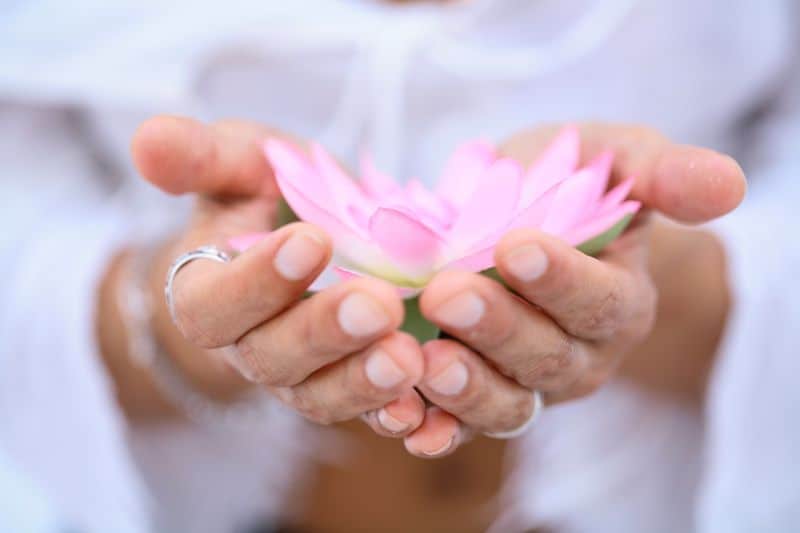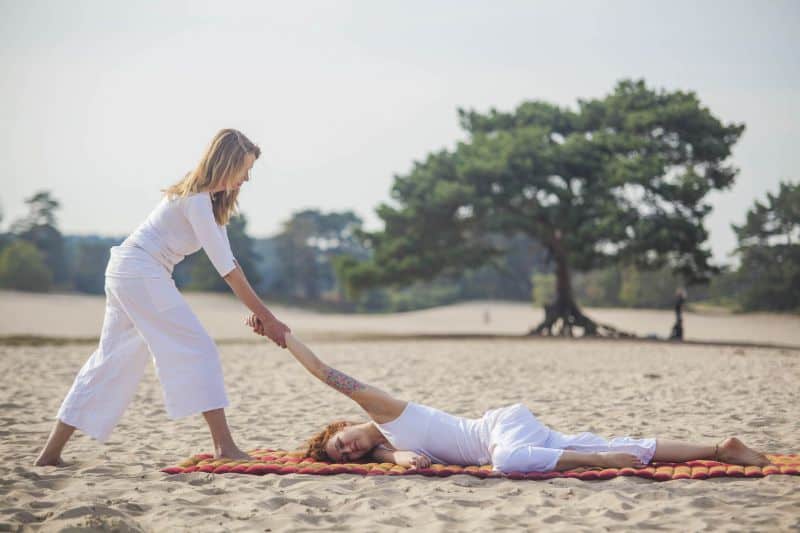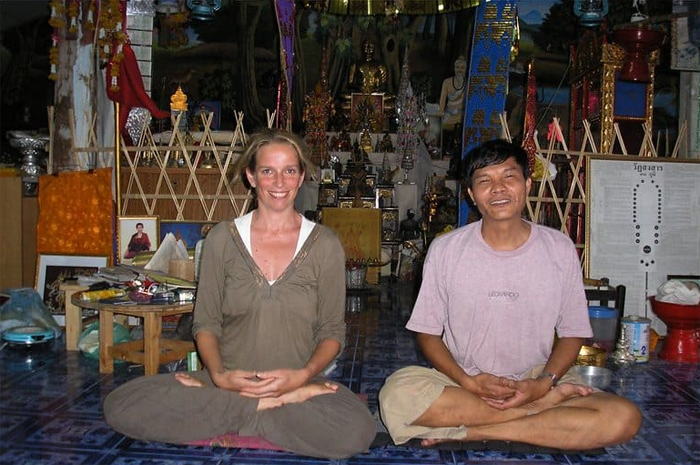
Thaise massage bij piriformis syndroom
25 juli 2016
Balans basis voor gezondheid
5 januari 2017In gesprek met Noam Tyroler
This is an interview with Noam Tyroler. Noam is one of my favorite teachers and very well-known for his courses in Thai Acupressure in the West. He is beside an expert of Thai acupressure a lovely person and I am always looking forwards for his visits at my school. And that is why I love to let you know a bit more about him by this interview.
1. How did your own practice of Thai massage become focused on medical massage and acupressure treatment?
I took my first Thai massage course in 1989 and fell in love with its magic.I did not know what this magic was made of but was passionately indulging myself in it. The clients in the first years of my practice were Yoga students and Teachers, Dancers, Actors and mostly young healthy people.
I was not interested in Therapy but over time became interested in helping people in pain, it seemed to be a challenging game but it became also clear that there is a missing part in my Thai massage training which did not include the knowledge of how to treat pain. And also, I was already teaching at a Holistic Medicine college in Tel Aviv and the students sow themselves as future Therapists and wanted to learn the Thai traditional way of treating pain.
In 1997, 8 years after I began my Thai massage practice, I went again to Thailand in search of traditional knowledge of medical massage. I visited a few Schools and teachers and the Wat Pho School seemed to offer precisely what I was looking for. They were teaching a collection of 52 treatment protocols for all the ailments and pains that I saw in my clients and did not know how to approach.
I felt as though I have found gold. It was a personal Golden Points rush. For a year after I came back from Thailand, I was digging in this golden knowledge trying it on friends and family members and was fascinated by how precise and effective this knowledge is. My clients refereed their family and Friends that were in pain and my focus shifted to treating orthopedic disorders. Soon I had to create a medical Thai massage course in the college and that course became popular.
In 2008 I published the Practitioners Book guide Thai Acupressure which brought invitations to teach in different countries and I became Mr. Thai Acupressure. Back home in Israel I teach also General Thai Massage (which I absolutely love) but out of Israel its only Thai Acupressure that I am associated with.
2. What made you decide to write a book about Thai acupressure?
During the year of Practice that followed my course in Thailand I was struggling with understanding the notes that I took during my course, struggling to remember and understand the lines and points locations and felt very strongly the absence of a clear Guide Book on this subject. I asked people who traveled to Thailand to search for a book on this subject but they all came back empty handed and it became clear that such a book does not exist at all, not even in Thai. Later when I begun to teach this material at the Riedman College most of the class time was spent on the students writing down, the diagnosis, treatment steps, lines and point locations, and there was not enough time left for a hands on practice which was frustrating both for me and for the students. I was frustrated by seeing them finish the course overwhelmed and confused.
They kept on asking that I prepare a better manual for them that will include not only the drawings of the Wat Pho manual but the entire texts that they put down in their papers. One of my assistants told me: look, with a better manual we will use most of the class time to a hands-on practice which the students miss so much, which made a lot of sense.
Another friend, a TCM Practitioner that was using the Thai points combinations in his Acupuncture sessions, told me that this knowledge should be accessible to Acupuncturists all over the world and a Physical Therapist friend encouraged me to spread this knowledge among practitioners of all manual therapies. My friends also promised to me that I will become rich if I publish it in English.
It took 2 years full time job to write. I have not become rich but I loved writing it and it has taken me in tours around the world which I love and sometime in 2016 I will finally finish to pay all my debts on this wonderful adventure. It’s been translated to Chinese and being translated now also to Spanish, Japanese, German and Turkish.
3. Your video training is remarkably in-depth and technically precise. What effect do you foresee them having on the practice of Thai massage outside Thailand?
Thanks! I am not sure but if it will become as popular in our community as the book “Thai Acupressure” has, it will certainly make a contribution in making the medical knowledge of Thai massage more accessible. My wish is to make this knowledge a normal part in the training of every serious Thai massage student. It does not necessarily have to be the Wat Pho collection of lines and points formulas but can be the slightly different formulas of other Schools. General Thai Massage outside of Thailand does not need me.
There are very good non Thai Massage teachers in the west (though many of them do not teach well enough lines work which is the very basics of Thai massage) and very good guide books and video guides on General Thai Massage and a very high level of practice. You have a better chance of getting a good Thai Massage session in Holland by a native Dutch practitioner then in Thailand.
My mission is to bring my community of Thai Massage Students and Practitioners the missing part in our Thai Massage trainings which is the Traditional Thai knowledge of how to treat pain. Thai Dee is one of a very few Schools in the world that teaches its Students this knowledge. This knowledge is in practice today in most of Thailand’s Hospitals but most Thai Massage Practitioners and teachers out of Thailand do not even know of it’s existence.
I hope that the new On-Line Video Guide will join the Guide book in spreading the word
about the missing part of our training around the world (and to be honest, I believe that it will have such an impact) but I made this video guide first of all to the participants of my courses as it has became clear that the book is necessary but not enough, that my students need also a video.
4. In Thailand most traditional Thai massage teachers do not like books and videos, because they believe this knowledge cannot be learned from books but only by many years of practice.
Teachers in Thailand supply their students with VERY basic course booklets. One can tell that books are not seen as important. If you watch how the Thais learn massage you see a long term teacher student relationship. I remember my Teacher, Kanika, at Wat Pho. She had 2 Thai students that studied with her 2 years before. They were treating many clients every day at the Wat Pho massage halls and were very experienced but were still sitting with my/their teacher, joining my class in between their clients, asked questions, asked for feedback and got instructions. My teacher was like their Mother. If they would be told that in place of spending 3-4 years with their Teacher every day, they would have to learn from a book or a video, that would seem strange and sad and a very bad idea. “How can a book take the place of my live beloved teacher?”
Thais see a direct and long Teacher Student relationship as the ONLY right way to study. I think that they are right! How I wished that I could stay for even only a few months longer with my teachers! Some westerners stay long months in Thailand near their teachers. That is the right way to do it. BUT… most of us cannot possibly do that. Most of us have to go back home to work and to our families. So in the west we have to rely on books and videos.
They give us good parts of our teachers over and over again for a long time and make a substitute for a long term relationship with a live teacher. I could not possibly learn Thai Acupressure if I did not have my Girl friend sitting there at Wat Pho the whole course taking notes and taking videos (not allowed today). Most westerners that studied that course did not take many notes and did not take videos and could never practice what they learnt and could never use it. If they could put their hand on a good book they would certainly do that and will eventually be able to practice the knowledge.
They had no chance of learning so much knowledge in only 5 days without a good book and a good video. But I wished that Idit would have taken more notes and more videos from more angles. You can watch one of her videos from my course in 1997 in the Introduction Video at the On-Line Video page on thaiacu.com and understand my point. Books and Videos cannot possibly replace the aspect of knowledge that comes about only through many years of practice and experience. It’s a fact. Books and videos only make it possible for you to practice and get experienced. They support your hands on practice and they make sure that you do not get lost and do not give up.
No book = You no practice A good guide book = You do practice
In Thailand, Students in the programs of the Ministry of public health, Ministry of education and Ministry of labor study 10 treatment protocols with a total of 55 points in a 4 months full time (400 hours) course. They can learn more treatment protocols in an additional advanced 4 month course. Their course text books show simple diagrams of points only but after 4 months or 8 months, these manuals are good enough for them as they practiced a lot and really know the lines, points and treatment procedures by heart. One can also study the Wat Pho’s collection of 52 treatment protocols with over 200 points by heart and use the Wat Pho simple course text book but one needs 8 months full time for that. I created the book and videos for those who study in 5-day or 10-day courses but still want to really learn this knowledge.
5. To their (The Thai Teachers) opinion books will keep the student into their head and away from the most important tool for a Thai massage therapist: sensing.
I agree. A massage Student should either read OR press & sense. It cannot work together in the same time but it’s clear to most students is it not? There is time to listen and watch the teacher and a time to try what he/she explains. There is a time to watch the video in which the teacher explains and a time to try it with your student partner, sense, feel, press, try again and again, receive, see how it feels and so on. There is a time to read in the book and a time to Practice.
Their opinion may be correct for students that can learn in the Thai way but not for a student that has 5 or 10 days only. A few Thai Teachers already understand that if they offer short intensive courses for westerners they should supply them with coherent, detailed and clear study materials. If Thais want their Traditional Medicine to become a world Medicine like TCM, they should follow the example of the Chinese that are serious in preserving and presenting their knowledge in a coherent and clear manner.
6. That is one of the reasons that the Thai pictures of Sen lines and acupressure points are very unclear and just give a basic idea where to find the line of point. The precise point you have to find by sensing, because with every person the exact place is a bit different. How do you think about this Thai idea of the importance of sensing?
I agree. Sensing is everything in bodywork.
The instructions that are given to us by our teacher or by a guide book or by a video guide are taking us to the area of the point but once we are there, we will have to find the point by sensing the area, finding the stiff spot (or deep spot) and find how deep to press and how long to stay by sensing and do it all on our own.
I do not agree that the points have different locations in different people but even if it’s the same location exactly, as it’s described in the book, we still have to find that place. Only in people that had a serious injury or operation, points and lines can move.
If you want to know more about Noam Tyroler or his courses/book/video, watch: www.thaiacu.com
More information about Noam Tyrolers courses at Thai Dee watch: Specialisaties
Meer blogs lezen over Thaise yogamassage en aanverwante onderwerpen? Klik dan op Thai Dee massage blog.




